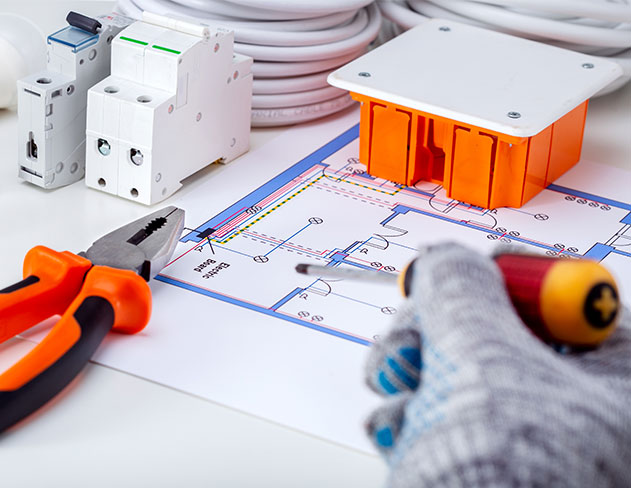Understanding and complying with PAT testing regulations in the UK is critical to avoiding potential legal issues and ensuring the ongoing safety of electrical appliances and equipment. A properly implemented PAT testing regime gives peace of mind that your electrical appliances are safe to use and you are meeting all legal requirements.
The Electricity at Work Regulations requires that electrical equipment is maintained to prevent danger, the most common form of achieving this is through PAT testing. So while not enshrined in law itself, the reasons for having PAT testing are.
The Legal Foundation of PAT Testing
As mentioned, the primary legal framework relevant to PAT testing in the UK is the Electricity at Work Regulations 1989. Specifically, Regulation 4(2) states that electrical equipment used at work must be “maintained so as to prevent danger”. This establishes an obligation for employers to proactively maintain and inspect electrical appliances to ensure their ongoing safe condition.
Regulation 16 expands further by requiring that employers ensure maintenance of electrical equipment is only undertaken by a competent person. Additionally, Regulation 29 mandates that employers must provide suitable and sufficient information, instruction and training to employees in relation to using electrical equipment.
Together, these clauses make PAT testing very legally relevant for UK workplaces. Regular PAT testing can ensure that businesses stay legally covered, and avoid costly fines and legal issues.
PAT Testing Regulations for Homeowners
The legal requirements around PAT testing are less stringent for residential homeowners than for businesses. There is no explicit law mandating PAT testing in private homes in the UK.
However, the Electricity Safety, Quality and Continuity Regulations 2002 do require that all electrical installations in homes are safe. This has led to debate around whether PAT testing should be mandated for homeowners as an important safety precaution.
While PAT testing is not a legal requirement for homeowners, it is still strongly recommended as a best practice. Neglecting to PAT test electrical appliances in your home does increase fire and electrocution risks. Many home insurers encourage PAT testing, some even making it a condition of home insurance policies.
If an accident or injury does occur due to an unsafe appliance, homeowners who neglected PAT testing may face accusations of negligence and liability. So while not definitively required by law, PAT testing is still advised for homeowners to ensure safety and limit legal risks.
PAT Testing Regulations for Business Owners
For UK businesses, PAT testing is a clear legal requirement under health and safety regulations. All electrical equipment used in a workplace must be periodically inspected and tested.
The frequency of PAT testing varies based on the type of workplace:
- Offices and Low Risk Environments: PAT testing every 2-4 years
- Industrial/Higher Risk Environments: PAT testing every 6 months – 1 year
- Places Open to the Public: PAT testing every 6 months – 1 year
Certain business types like hotels, care homes, hospitals, and schools have specific PAT testing responsibilities to ensure guest and employee safety. Handheld, mobile, or frequently moved equipment should also be tested more frequently.
Proper record keeping is a critical part of regulatory compliance. Businesses must maintain a PAT register of all appliances checked and labels affixed to appliances indicating pass/fail status and retest due dates. Records must be kept for a minimum of 2 years
If inspected by the Health and Safety Executive (HSE), businesses must provide documentation proving PAT testing regimes are in place and being followed. Failure to meet requirements can result in enforcement action including fines or prosecutions.
Understanding the Legal Terminology
To fully comprehend PAT regulations in the UK, it is important to understand some key legal terms:
- “Competent Person” – An individual with relevant qualifications and expertise to properly conduct PAT testing and identify failures or defects. This demonstrates duty of care.
- “Maintained” – Keeping electrical equipment working properly and preventing danger through regular inspection and testing. Links to the “safe condition” clauses in regulations.
- “Reasonably Practicable” – Businesses must do what is viable and practical to ensure safety. Linked to frequency of PAT testing based on workplace risk levels.
These terms provide context on the standards businesses must meet for PAT testing compliance. They indicate testing must be done competently, regularly, and proportionate to risks present.
Knowing these definitions allows both homeowners and business owners to interpret how regulations apply to their specific situation. It empowers them to make smart decisions ensuring they meet all legal requirements.
Responsibilities and Liabilities
Employers and business owners bear the primary responsibility for ensuring PAT testing is carried out properly. Individual employees also have a legal duty under health and safety laws to use electrical appliances per company guidelines and training.
If an employee suffers an electrical shock or fire due to a faulty appliance, the employer may face liability for workplace negligence if PAT testing was not conducted adequately. Employees also have a responsibility to visually check appliances before use and report any issues or damage immediately.
For homeowners, liability can arise if someone is injured due to a faulty appliance on their property. Home insurance claims linked to electrical accidents may also be denied if PAT testing was not kept up to date. Documenting PAT inspections provides helpful evidence of due diligence.
Ultimately, both homeowners and business owners share an obligation to ensure the ongoing safety of electrical devices through regular visual inspections and PAT testing regimes. Neglecting these duties exposes them to potentially serious legal consequences.
Navigating the Grey Areas
While PAT regulations lay out clear general requirements, there can still be grey areas where the specific testing obligations are ambiguous.
For example, some workplace environments don’t cleanly fit categories like “offices” or “industrial”. Factors like shift work can also complicate determining what frequency of testing is needed.
There is uncertainty around when PAT testing is legally required for residential homeowners versus just recommended best practice. Home-based businesses also create confusion regarding whether homeowners rules or business guidelines apply.
In these complex cases, it is smart to take a proactive approach and adopt more frequent testing schedules that err on the side of caution. Consulting qualified PAT testing professionals can provide expert guidance tailored to your unique situation.
When in doubt, it is in homeowners’ and employers’ best interests to test more often. This helps ensure full compliance with the overarching legal duty to maintain electrical safety. A slight overabundance of caution is wise if it avoids potential accidents and liabilities.
Updates and Amendments to PAT Testing Regulations
PAT testing regulations are not set in stone and do periodically evolve to match new workplace practices. Changes typically involve expanded clarity around frequency of testing or new business types covered.
For example, latest updates now recommend annual PAT testing for construction sites where power tools are in frequent use. Care home testing requirements have also been reinforced to protect vulnerable populations.
Staying current on amendments is important, as ignorance of new rules is not a legal defence. Homeowners and business owners should periodically check websites of oversight bodies like the HSE for regulatory updates. Enlisting a reliable PAT testing service can also ensure ongoing compliance.
While the core legal framework remains the Electricity at Work Regulations 1989, anticipating updates helps keep homeowners’ and employers’ maintenance regimes aligned with any changes. It demonstrates continued vigilance and duty of care.
Enforcement of PAT Testing Regulations
The Health and Safety Executive (HSE) serves as the main regulatory body overseeing PAT testing and electrical safety in UK workplaces. Along with conducting onsite inspections, the HSE can launch investigations in response to employee complaints regarding perceived non-compliance.
If deficiencies are found, the HSE may serve improvement or prohibition notices, requiring prompt action to meet standards. Continued infractions can trigger prosecution and court proceedings, resulting in substantial fines or even imprisonment in extreme cases.
For homeowners, local authorities play more of an advisory role regarding PAT testing unless a major accident occurs. Insurance agencies may also apply pressure on homeowners to comply as a condition of coverage.
Maintaining rigor around PAT testing and transparency around records will satisfy any scrutiny from regulators. It also shows diligence in the event any legal proceedings unfold over electrical accidents. Compliance provides the best protection.
Conclusion
Regular, diligent PAT testing is clearly integral to electrical safety and regulatory compliance in UK workplaces and homes. Keeping up to date with legal requirements and definitions provides clarity for both business owners and residential homeowners on fulfilling their duties.
All parties share an obligation to maintain a safe electrical environment and prevent avoidable accidents proactively. This extends from implementing testing regimes to ensuring employees understand how to visually identify damages.
Homeowners and employers can ensure they meet their legal responsibilities by partnering with qualified PAT testing companies and professionals. Staying informed and compliant reduces risk, providing peace of mind that safety protocols are being followed.

